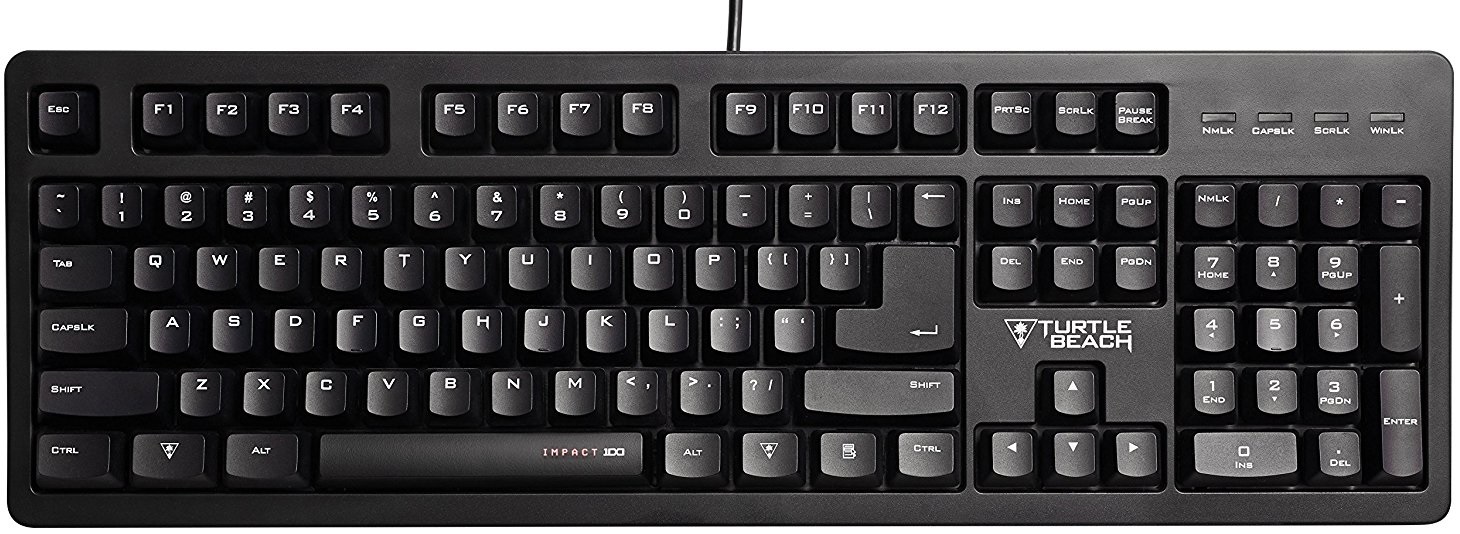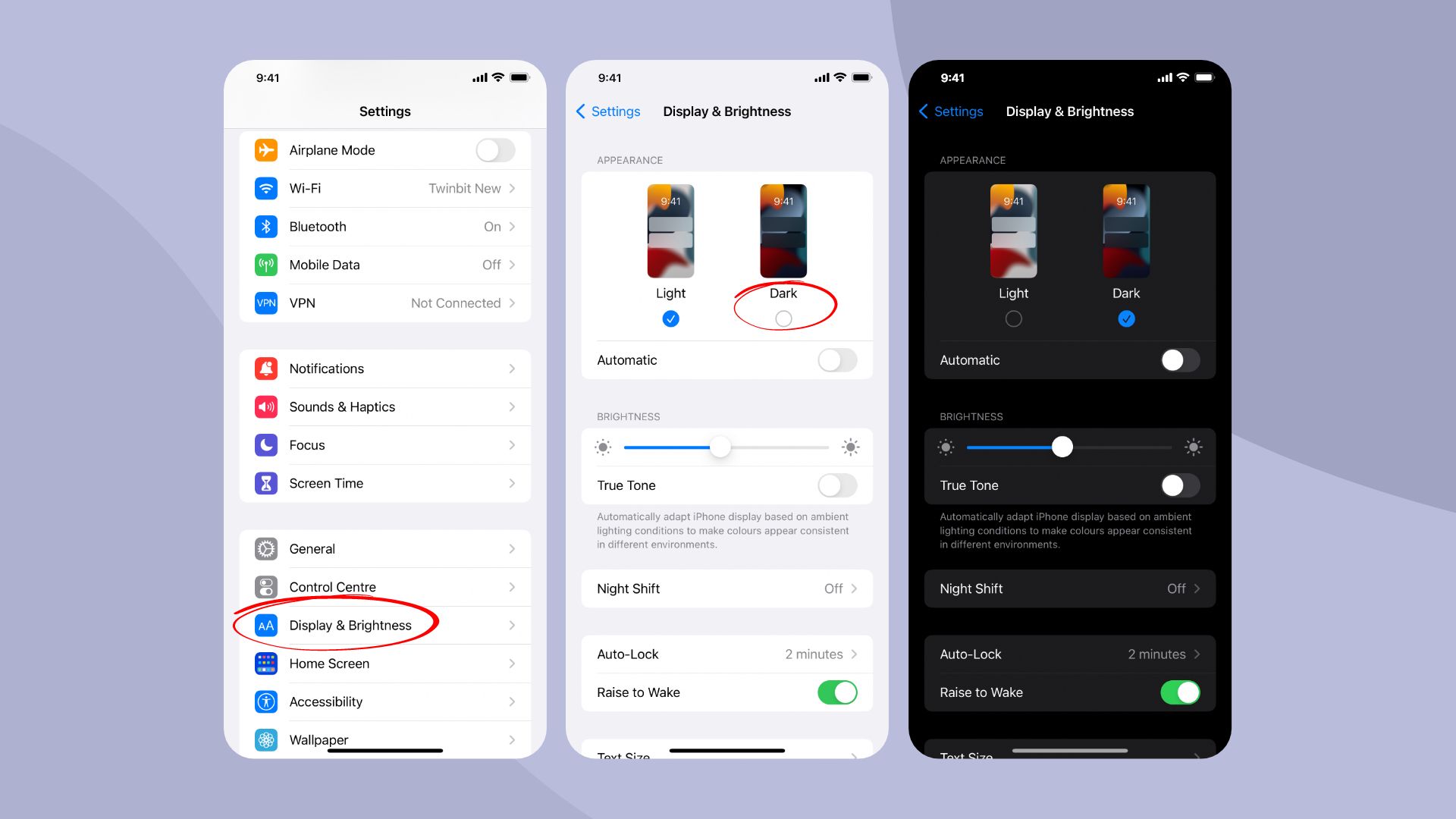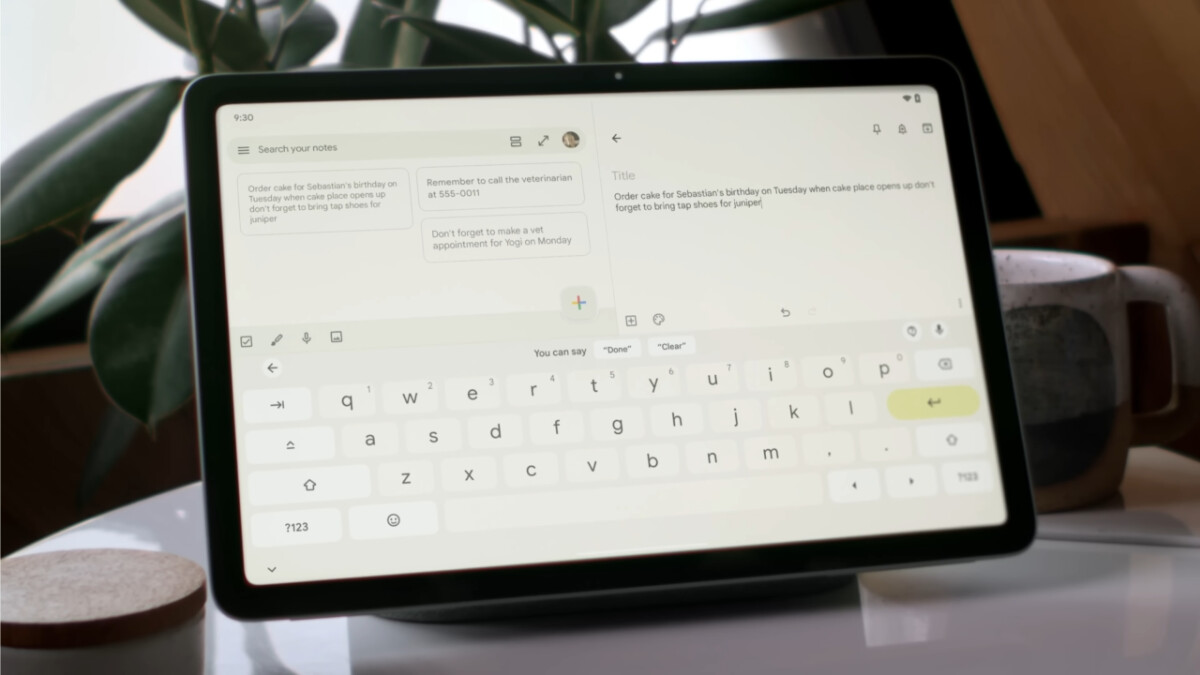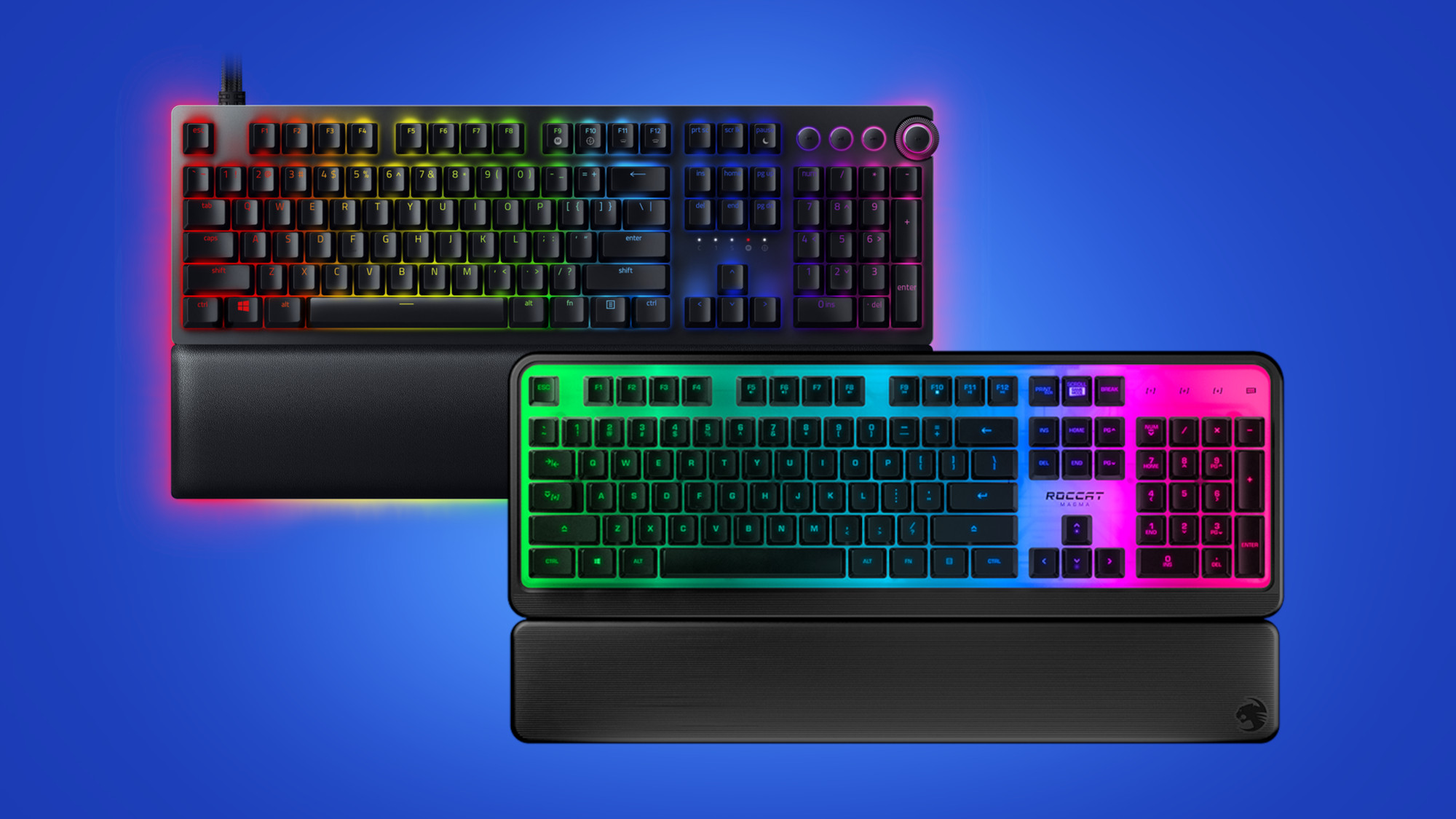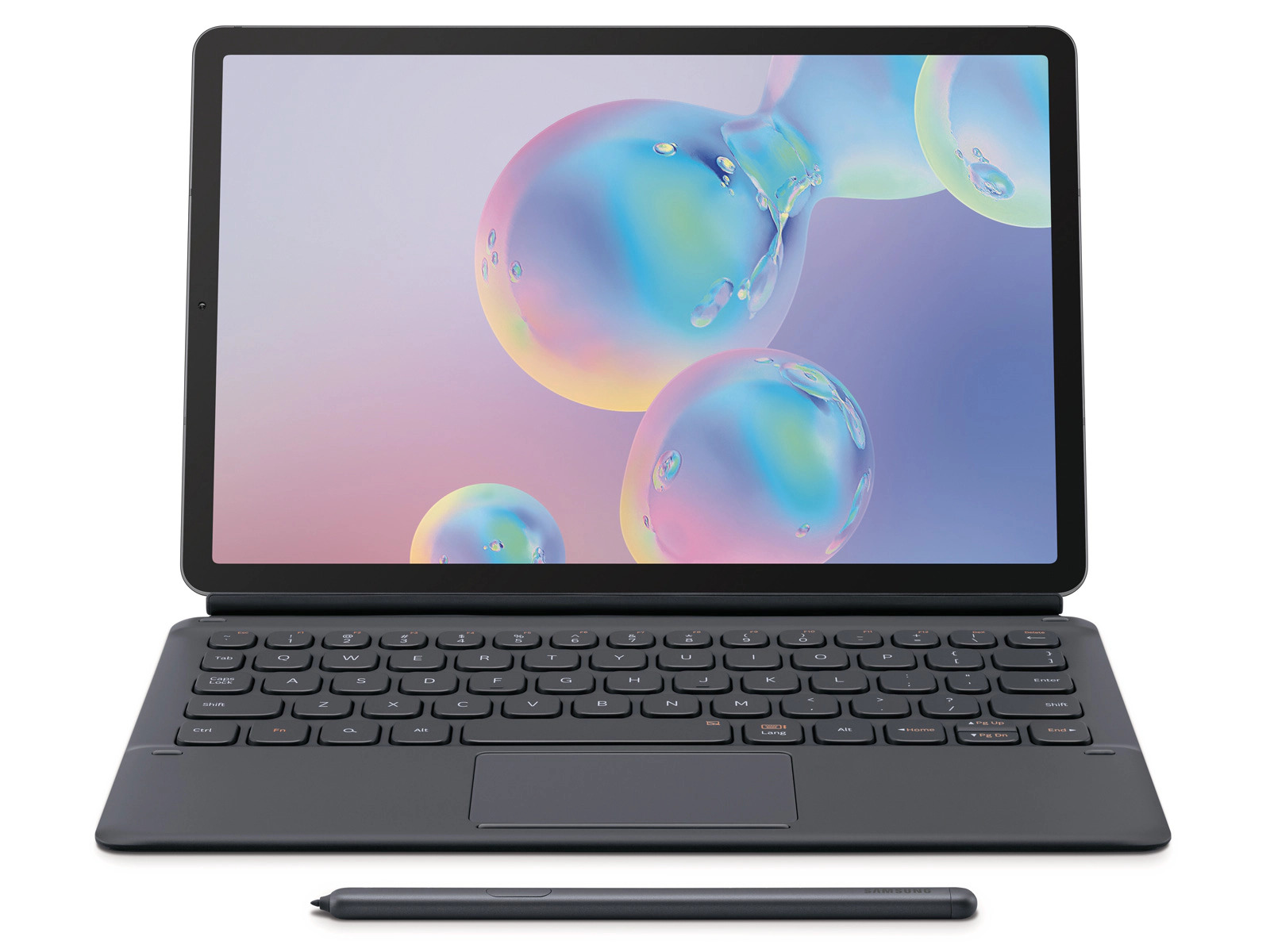Introduction
Keyboards are an essential tool that we use every day, whether it’s for typing documents, playing games, or browsing the internet. They are an integral part of our computers, laptops, tablets, and even smartphones. But have you ever wondered what exactly a keyboard is and how it works?
A keyboard is a device that allows us to input data into a computer or other electronic devices. It consists of a set of keys that represent different characters, numbers, symbols, and functions. These keys are arranged in a specific layout, most commonly QWERTY, which is named after the first six letters on the top row.
The primary function of a keyboard is to transfer the input from the user into the computer. When we press a key, it generates an electrical signal that is sent to the computer, which then processes the signal and displays the corresponding character or action on the screen. This input method dates back to the early days of computing and has remained a fundamental part of our daily interactions with technology.
Over the years, keyboards have evolved, introducing different types and designs to cater to various needs and preferences. From traditional mechanical keyboards to futuristic ergonomic keyboards, there is a wide range of options to choose from.
This article aims to delve into the different types of keyboards, the components that make them work, and the factors to consider when selecting the right keyboard for your needs. So, whether you’re a professional typist, a gamer, or someone who spends long hours in front of the computer, join us as we embark on a journey to explore the world of keyboards and their fascinating features.
What Is a Keyboard?
A keyboard is a peripheral input device that is used to enter alphanumeric and other characters into a computer or electronic device. It is one of the primary methods of inputting data, allowing users to communicate with the device and execute commands. Keyboards are equipped with a set of keys, usually arranged in a specific layout, that represent letters, numbers, symbols, and functions.
Keyboards come in various forms and sizes, but the most common layout is the QWERTY arrangement. QWERTY is named after the first six letters on the top row and has been the standard layout for keyboards for decades. This layout was originally designed to prevent mechanical typewriters from jamming by placing frequently used letters apart from each other.
Modern keyboards are typically connected to computers or devices via a USB cable or wireless connection. They can be integrated into laptops, tablets, and smartphones, or they can be standalone devices for desktop computers. Regardless of the type or connection method, the keyboard acts as an interface between the user and the device, allowing for efficient data input.
In addition to alphanumeric keys, keyboards also include a range of special keys. These keys serve different functions and can vary depending on the type of keyboard. Examples of special keys include function keys (F1, F2, etc.), modifier keys (Shift, Ctrl, Alt), navigation keys (arrow keys, Home, End), and multimedia keys (volume control, play/pause, etc.). These keys provide shortcuts and additional functionality, enhancing the user experience and increasing productivity.
Keyboards have evolved significantly since their inception, with advancements in technology leading to more ergonomic and customizable designs. Mechanical keyboards, for example, use individual mechanical switches for each key, providing tactile feedback and a satisfying typing experience. Membrane keyboards, on the other hand, use a flexible membrane under the keys to register input.
Understanding what a keyboard is and its different features will help you choose the right keyboard for your needs. Whether you’re a professional writer, a gamer, or a casual user, selecting a keyboard that suits your preferences and usage patterns can greatly enhance your computing experience.
Types of Keyboards
Keyboards come in various types, catering to different needs and preferences. Let’s explore some of the common types of keyboards available in the market today:
- Standard Keyboards: Also known as traditional or basic keyboards, these are the most commonly used keyboards. They feature a QWERTY layout with alphanumeric keys, function keys, and other standard keys. Standard keyboards are versatile and suitable for everyday use.
- Mechanical Keyboards: Mechanical keyboards have gained popularity among gamers and typists alike for their tactile feedback and durability. They use individual mechanical switches for each key, resulting in a satisfying and responsive typing experience. Mechanical keyboards come in various switch types, such as Cherry MX, providing different levels of tactile feedback and noise levels.
- Membrane Keyboards: Membrane keyboards are the most common type of keyboards found in laptops and low-cost desktop keyboards. They use a flexible membrane layer under the keys to register input. Membrane keyboards are generally quieter and more affordable compared to mechanical keyboards.
- Ergonomic Keyboards: Ergonomic keyboards are designed to provide a more comfortable typing experience by reducing strain on the wrists and hands. They feature a split or curved design, allowing users to keep their hands in a more natural position. Some ergonomic keyboards also come with wrist rests to provide additional support and comfort.
- Wireless Keyboards: Wireless keyboards offer the convenience of a cable-free connection to your computer or device. They use technologies such as Bluetooth or USB dongles to establish a wireless connection. Wireless keyboards are popular for their flexibility and clutter-free setup.
- Gaming Keyboards: Gaming keyboards are specifically designed for gamers and often feature additional gaming-oriented features. These include customizable backlighting, programmable keys, macro support, and dedicated media keys. Gaming keyboards are built to withstand intense gaming sessions and offer a responsive and precise gaming experience.
These are just a few examples of the many types of keyboards available in the market. It’s important to consider your specific needs, preferences, and budget when choosing a keyboard. Whether you’re a professional typist, a gamer, or someone who uses a computer for everyday tasks, there’s a keyboard out there that will suit your requirements.
Components of a Keyboard
A keyboard consists of several key components that work together to facilitate input. Understanding these components can help you better appreciate how a keyboard functions. Let’s take a closer look at the essential components of a keyboard:
- Keycaps: Keycaps are the visible part of the keyboard that you press to input characters. They are typically made of plastic and are labeled with letters, numbers, symbols, and icons.
- Switches: Switches are located underneath the keycaps and are responsible for registering key presses. Mechanical keyboards use mechanical switches, while membrane keyboards use dome switches or rubber domes to register input.
- Printed Circuit Board (PCB): The PCB is the electronic circuit that connects the switches to the computer or device. It acts as the intermediary that sends the electrical signal from the switches to the computer for processing.
- Controller Chip: The controller chip is the brain of the keyboard. It processes the signals from the switches and sends the corresponding data to the computer or device. The controller chip determines the keyboard’s features, such as key rollover (the number of simultaneous key presses it can register) and polling rate (how often the keyboard communicates with the computer).
- Connectivity: Keyboards can connect to devices via various methods, including USB, Bluetooth, or wireless dongles. The connectivity method determines how the keyboard communicates with the computer or device.
- Function Keys: Function keys, usually labeled as F1, F2, etc., are special keys that perform specific functions depending on the context. They can be used for shortcuts, adjusting volume, controlling media playback, and accessing various system functions.
- Modifier Keys: Modifier keys include Shift, Ctrl, and Alt keys. These keys modify the function of other keys when pressed in combination. For example, holding Shift while pressing a letter key will result in typing the uppercase version of that letter.
- Navigation Keys: Navigation keys include the arrow keys (up, down, left, right) and additional keys such as Home, End, Page Up, and Page Down. These keys allow for precise cursor movement and navigation within documents and web pages.
- Special Keys: Keyboards may include additional special keys, such as multimedia keys for controlling volume and playback of media, dedicated shortcut keys for specific applications, or customizable macro keys for programming repetitive tasks.
These components work together harmoniously to provide a seamless and efficient typing experience. Whether you’re typing a document, playing a game, or executing commands, understanding the components of a keyboard can help you appreciate the intricate design behind this essential input device.
How Does a Keyboard Work?
A keyboard is a remarkable piece of technology that allows us to communicate with computers and other electronic devices through the input of characters and commands. But how does it actually work? Let’s dive into the inner workings of a keyboard:
When you press a key on a keyboard, you complete an electrical circuit, generating an electrical signal. Each key on the keyboard is connected to a switch, which controls whether the circuit is open or closed. When a key is at rest, the switch is open, and no electrical signal is generated.
When you press a key, it pushes down on the switch, closing the circuit. This triggers the switch to send an electrical signal to the keyboard’s controller chip, which is responsible for processing the input.
The controller chip receives the signal and translates it into a digital code, known as a scan code or key code. This code represents the specific key that was pressed. The digital code is then sent to the computer or device, which interprets it based on the installed operating system and software.
The computer or device recognizes the scan code and processes it to generate the corresponding character or action on the screen. For example, if you press the letter “A” key, the keyboard sends the scan code for “A” to the computer, which then displays the letter “A” on the screen.
Keyboards also have the ability to detect multiple key presses simultaneously, known as key rollover. This feature allows for complex inputs, such as typing multiple keys at once or executing key combinations like Ctrl + Alt + Delete. Key rollover varies depending on the keyboard and can range from 2-key rollover to n-key rollover, where n represents the maximum number of simultaneous key presses that the keyboard can register.
Nowadays, most keyboards use a standardized interface, such as USB or Bluetooth, to connect to the computer or device. This allows for fast and reliable communication between the keyboard and the device, ensuring minimal input lag and accurate key registration.
Overall, the functioning of a keyboard relies on the coordination between the physical key switches, the controller chip, and the computer or device to accurately translate and process user input. This enables seamless communication and interaction, making the keyboard an indispensable tool for modern computing.
Mechanical vs. Membrane Keyboards
When selecting a keyboard, one of the choices you may encounter is between a mechanical keyboard and a membrane keyboard. Both types have their unique characteristics and advantages. Let’s compare mechanical and membrane keyboards to help you make an informed decision:
Mechanical Keyboards:
Mechanical keyboards are often favored by typists, gamers, and enthusiasts for their tactile feedback and durability. Unlike membrane keyboards, mechanical keyboards use individual mechanical switches beneath each key. These switches are designed to provide a distinct tactile or auditory sensation when pressed.
One of the main advantages of mechanical keyboards is their superior typing experience. The tactile feedback from the switches allows for precise and responsive typing, reducing the chances of accidental key presses. The audible “click” sound produced by some mechanical switches also adds to the tactile experience.
Mechanical keyboards offer a wide range of switch options, each with varying levels of tactile feedback and actuation force. Popular switch brands include Cherry MX, Razer Green, and Logitech Romer-G. These switches come in different variants, such as linear, tactile, and clicky, enabling users to choose the one that suits their preferences.
Additionally, mechanical keyboards are known for their durability. The mechanical switches are designed to withstand millions of keystrokes, making them a long-lasting investment. They are also easier to clean and maintain compared to membrane keyboards.
On the flip side, mechanical keyboards are generally more expensive than membrane keyboards. The individually manufactured switches and overall build quality contribute to the higher cost. Mechanical keyboards may also produce more noise due to the audible “click” sound, which can be a consideration in shared workspaces or quiet environments.
Membrane Keyboards:
Membrane keyboards are the most common type of keyboards found in laptops and low-cost desktop keyboards. They are constructed with a flexible membrane layer beneath the keycaps. When a key is pressed, the membrane compresses and completes an electrical circuit, registering the key press.
One of the main advantages of membrane keyboards is their affordability. They are generally more budget-friendly than mechanical keyboards, making them a popular choice for casual users.
Membrane keyboards are also known for being quieter compared to mechanical keyboards. The absence of individual mechanical switches eliminates the loud “click” sound that some people find distracting or disruptive.
However, membrane keyboards often lack the tactile feedback of mechanical keyboards. The keys may feel mushy or less responsive, which can affect typing accuracy and speed. Furthermore, membrane keyboards may experience a reduction in performance over time, as the membrane layer can wear out with extensive use.
In recent years, hybrid keyboards have emerged, combining the best of both mechanical and membrane keyboards. These keyboards feature a membrane-like layer with individual mechanical switches for certain keys, providing a balance between affordability and improved typing experience.
Ultimately, the choice between a mechanical or membrane keyboard depends on your personal preferences, typing style, and budget. If you prioritize tactile feedback, durability, and a premium typing experience, a mechanical keyboard may be the ideal choice. On the other hand, if affordability and quietness are more important to you, a membrane keyboard might be the better option.
Wireless Keyboards vs. Wired Keyboards
When it comes to choosing a keyboard, one of the decisions you’ll need to make is whether to opt for a wireless keyboard or a wired keyboard. Both options have their advantages and considerations. Let’s explore the differences between wireless keyboards and wired keyboards to help you determine which one suits your needs:
Wireless Keyboards:
Wireless keyboards offer the convenience of a cable-free setup, allowing you to place the keyboard anywhere within the wireless range of the connected device. They typically use technologies like Bluetooth or RF (radio frequency) to establish a connection with the computer or device.
One of the main advantages of wireless keyboards is their flexibility. Since they do not require a physical connection, you have the freedom to position the keyboard in a way that is most comfortable for you. This can be particularly beneficial if you prefer to work from a distance or if you frequently switch between devices.
Wireless keyboards are also portable and space-saving. They are lightweight and easy to carry, making them convenient for use with laptops, tablets, and other portable devices. Additionally, the absence of cables reduces clutter and allows for a cleaner workspace.
However, it’s important to note that wireless keyboards require batteries or a rechargeable power source to operate. This means you need to ensure that the batteries are charged or replaced regularly to maintain uninterrupted usage. The wireless connection can also be prone to interference or latency issues, although modern wireless technologies have significantly improved in this regard.
Wired Keyboards:
Wired keyboards, as the name suggests, connect directly to the computer or device using a cable. They utilize USB or PS/2 connectors, providing a reliable and stable connection.
One of the primary advantages of wired keyboards is their reliability. Since they are directly connected to the computer, there is no risk of wireless interference or latency. This makes them a preferred choice for gaming or situations where responsiveness is crucial.
Another benefit of wired keyboards is that they do not require batteries or regular charging. They draw power directly from the connected device, ensuring continuous operation. This can be particularly advantageous in professional environments or for users who spend extended periods typing.
However, wired keyboards do come with some limitations. The cables can restrict movement and add clutter to your workspace. Moreover, they lack the portability and convenience of wireless keyboards, which may be a consideration if you frequently move around or use multiple devices.
Ultimately, the choice between a wireless keyboard and a wired keyboard depends on your personal preferences and requirements. If you value flexibility, portability, and a cable-free setup, a wireless keyboard may be ideal. On the other hand, if you prioritize reliability, responsiveness, and don’t mind the presence of cables, a wired keyboard may be the better choice.
Gaming Keyboards
Gaming keyboards are designed specifically to enhance the gaming experience, providing gamers with a competitive edge and improved comfort during gameplay. These keyboards are equipped with features and functionalities tailored to meet the demanding requirements of gamers. Let’s explore some key aspects of gaming keyboards:
Key Rollover and Anti-Ghosting:
Gaming keyboards often feature advanced key rollover and anti-ghosting technology. Key rollover refers to the number of simultaneous key presses a keyboard can register. Gaming keyboards typically offer high-key rollover, such as N-key rollover, ensuring that every key press is accurately detected, even during intense gaming sessions.
Customization and Programmable Keys:
Gaming keyboards often come with programmable keys that allow gamers to set custom macros or assign specific functions to individual keys. This enables quick execution of complex commands or repetitive actions, giving gamers a significant advantage. Additionally, gaming keyboards may feature dedicated multimedia keys or volume control for easy access during gameplay.
Backlighting:
Backlighting is a popular feature in gaming keyboards, providing customizable lighting effects and illumination. RGB backlit keyboards allow gamers to personalize the color and intensity of the backlight, creating an immersive gaming experience. Illuminated keys also make it easier to locate keys in low-light gaming environments.
Responsive and Tactile Switches:
Gaming keyboards often utilize mechanical switches as they offer precise actuation and tactile feedback. The tactile feedback provides a satisfying typing experience and ensures that each key press is registered accurately. Different types of mechanical switches, such as linear, tactile, and clicky, cater to individual preferences for the feel and sound of the keys.
Ergonomics and Comfort:
Gaming keyboards are designed with comfort in mind. They may feature wrist rests to provide ergonomic support and reduce strain during long gaming sessions. Some gaming keyboards also have adjustable tilt angles, allowing users to customize the keyboard’s position for optimal comfort and wrist alignment.
Durability and Build Quality:
Gaming keyboards are built to withstand the demands of intense gaming. They are often constructed with durable materials and reinforced keys to withstand the repetitive and forceful strikes that can occur during gameplay. Additionally, gaming keyboards tend to have a longer lifespan compared to standard keyboards, ensuring they can endure hours of intense gaming action.
Gaming keyboards come in various sizes, ranging from full-sized keyboards to compact tenkeyless (TKL) keyboards or even smaller form factors like 60% keyboards. The choice of keyboard size depends on personal preference and gaming requirements.
With the ever-growing popularity of gaming, a wide selection of gaming keyboards is available, catering to different budgets and gaming styles. Whether you’re a casual gamer or an esports enthusiast, investing in a gaming keyboard can enhance your gaming performance and provide you with a more immersive gaming experience.
Ergonomic Keyboards
Ergonomic keyboards are specifically designed to provide a more comfortable typing experience and promote better ergonomics by reducing strain on the wrists, hands, and arms. These keyboards are created with ergonomic principles in mind and aim to mitigate the risk of repetitive strain injuries (RSI) associated with prolonged typing. Let’s delve into the key features and benefits of ergonomic keyboards:
Split or Curved Design:
Ergonomic keyboards often feature a split or curved design. This design allows users to position their hands naturally, reducing stress on the wrists and minimizing the risk of developing conditions like carpal tunnel syndrome. The split design separates the keyboard into two halves, enabling users to adjust the spacing according to their comfort level.
Palm Rests and Wrist Supports:
Ergonomic keyboards frequently incorporate palm rests or wrist supports. These components provide additional support and cushioning for the palms and wrists, promoting a more relaxed and neutral hand position. The palm rests help to alleviate pressure on the wrists and can be particularly beneficial during extended typing sessions.
Angled and Adjustable Design:
Ergonomic keyboards often feature an adjustable tilt or incline mechanism. The adjustable design allows users to customize the keyboard’s angle to suit their specific needs and optimize ergonomics. By adjusting the tilt, users can achieve a more neutral wrist position and reduce the strain on the hands and forearms.
Split Backspace and Function Keys:
In many ergonomic keyboards, the backspace key is divided into two separate keys. This split backspace design helps to minimize wrist extension and strain on the pinky finger while typing. Similarly, the function keys are often arranged in a separate cluster or grouped in a way that reduces finger movement and strain.
Ortholinear Layout:
Some ergonomic keyboards feature an ortholinear layout, where the keys are arranged in a straight grid, rather than the staggered layout of traditional keyboards. This layout ensures that each key is equidistant from the home row, reducing finger motion and increasing typing efficiency.
Benefits of Ergonomic Keyboards:
Ergonomic keyboards offer several benefits that can contribute to the overall comfort and well-being of users. By promoting a more natural and relaxed hand position, ergonomic keyboards help to alleviate muscle tension and reduce the risk of repetitive strain injuries. Users often report experiencing less fatigue, discomfort, and pain compared to using standard keyboards.
Ergonomic keyboards are particularly beneficial for individuals who spend extended periods typing, such as writers, programmers, and office workers. By investing in an ergonomic keyboard, users can improve their productivity, reduce the risk of musculoskeletal disorders, and enhance their overall typing experience.
It is important to note that transitioning to an ergonomic keyboard may require some adjustment, as the split or curved design may feel unfamiliar at first. However, with time and practice, users typically adapt and find long-term relief and enhanced comfort when using ergonomic keyboards.
Whether you’re seeking to prevent RSI or simply improve your typing comfort, an ergonomic keyboard can be a valuable investment that prioritizes your health and well-being in the digital age.
Choosing the Right Keyboard
When it comes to selecting a keyboard, there are a few key factors to consider to ensure it meets your specific needs and preferences. Here’s a guide to help you choose the right keyboard:
Intended Use:
Consider how you primarily use your keyboard. Are you a writer, a gamer, or someone who uses a computer for everyday tasks? Different types of keyboards are better suited for specific purposes. For example, mechanical keyboards are often preferred by typists and gamers, while standard keyboards are suitable for general use.
Key Switch Type:
If you opt for a mechanical keyboard, consider the different switch types available. Each switch offers a distinct typing experience, ranging from linear switches without tactile feedback to tactile switches with or without audible “clicks.” Try out different switch types if possible to find the one that feels most comfortable and suitable for your typing style.
Keyboard Size:
Consider the size of the keyboard that suits your needs. Full-sized keyboards come with a complete set of keys, including a numeric keypad. Compact keyboards like tenkeyless (TKL) or 60% keyboards omit the numeric keypad or additional keys, saving space and allowing for more flexibility in positioning.
Ergonomic Features:
If you spend long hours typing, consider an ergonomic keyboard that offers features like a split or curved design, wrist rests, and adjustable tilt angles. These features help reduce strain on the wrists and promote a more comfortable typing experience, ultimately minimizing the risk of repetitive strain injuries (RSI).
Connectivity:
Determine whether you prefer a wired or wireless connection for your keyboard. Wired keyboards offer a reliable and uninterrupted connection, while wireless keyboards provide flexibility and freedom of movement. Consider your workspace setup and personal preferences to choose the most suitable option.
Budget:
Set a budget for your keyboard purchase. Keyboards can vary significantly in price depending on the type, brand, and additional features. Consider your budget and balance it with the features and quality you desire.
User Reviews:
Take the time to read user reviews and ratings of keyboards you are considering. User feedback can provide insights into the performance, durability, and overall satisfaction of the keyboard you are interested in. It can help you make a more informed decision and identify any potential issues or advantages with a particular model.
By considering these factors, you’ll be better equipped to choose a keyboard that aligns with your needs, preferences, and budget. Remember that finding the right keyboard is a personal choice, and what works for others may not necessarily work for you. Take the time to test out different keyboards if possible and trust your own judgment in selecting the keyboard that feels most comfortable and efficient for your daily use.
Cleaning and Maintaining Your Keyboard
Regular cleaning and maintenance of your keyboard are essential to keep it in optimal condition and extend its lifespan. Over time, keyboards can accumulate dust, dirt, and debris, which can affect their performance and hygiene. Here are some tips on how to clean and maintain your keyboard:
1. Power Off and Disconnect:
Before cleaning your keyboard, turn off your computer or device and unplug the keyboard. This will prevent any accidental keystrokes or electrical issues during the cleaning process.
2. Remove Loose Debris:
Gently turn your keyboard upside down and give it a few taps to dislodge any loose debris, such as crumbs or dust. Use a can of compressed air to blow away any stubborn particles from between the keys.
3. Wipe the Keys:
Use a soft, lint-free cloth slightly dampened with water or a gentle household cleaner to wipe the keys. Avoid using excessive moisture, as it can seep into the keyboard and cause damage. For stubborn stains or grime, you can use a mild solution of dish soap and water.
4. Clean the Keycaps:
If your keyboard allows for removable keycaps, you can gently remove them for more thorough cleaning. Soak the keycaps in warm soapy water and use a soft brush to clean them. Rinse them thoroughly and make sure they are completely dry before reattaching them to the keyboard.
5. Disinfect the Keyboard:
In current times, it is also important to maintain the cleanliness of your keyboard for hygiene purposes. Consider using disinfecting wipes or isopropyl alcohol on a cloth to wipe down the keys and surfaces of the keyboard. Be sure to follow the manufacturer’s guidelines and avoid using excessive moisture.
6. Clean the Keyboard Base:
Use a soft brush or a can of compressed air to remove any dust or debris from the keyboard base. Be gentle and avoid applying too much pressure to prevent damaging the internal components.
7. Maintain a Clean Environment:
Keep your workspace clean to minimize the accumulation of dust and debris on your keyboard. Try to avoid eating or drinking near the keyboard as spills or crumbs can cause damage or stickiness to the keys.
8. Regularly Clean Your Hands:
Before using your keyboard, make it a habit to clean your hands to prevent oil, dirt, or grime from transferring to the keys. This will help maintain the cleanliness and longevity of your keyboard.
By following these cleaning and maintenance practices, you can ensure that your keyboard remains hygienic, performs optimally, and lasts for a long time. Remember to consult the manufacturer’s guidelines for specific cleaning instructions that may be applicable to your keyboard model. Taking good care of your keyboard will not only keep it looking clean and functioning smoothly but also contribute to a pleasant and comfortable typing experience.
Conclusion
A keyboard is an integral part of our daily interactions with computers and electronic devices. Whether we are typing documents, playing games, or browsing the internet, having the right keyboard enhances our productivity and overall user experience.
Throughout this article, we have explored the world of keyboards and their various types, components, and features. From standard keyboards to mechanical keyboards, wireless keyboards to gaming keyboards, there is a wide range of options to choose from, each catering to different needs and preferences.
We’ve discussed the components that make up a keyboard, such as the keycaps, switches, PCB, and controller chip. Understanding these components helps us appreciate the intricate technology behind this essential input device.
We’ve also explored the differences between mechanical and membrane keyboards, weighing the benefits of tactile feedback and durability versus the affordability and quietness of membrane keyboards.
The discussion on wireless keyboards versus wired keyboards highlighted the flexibility and clutter-free setup of wireless keyboards, as well as the reliability and stability of wired keyboards.
Additionally, we delved into the world of gaming keyboards, with their advanced features like key rollover, programmable keys, backlighting, and responsive switches, designed to enhance the gaming experience and provide a competitive edge.
Ergonomic keyboards were also discussed, emphasizing their split or curved design, wrist rests, and adjustable angles, all aimed at promoting comfort and reducing the risk of strain-related injuries during long typing sessions.
Finally, we explored the importance of choosing the right keyboard based on factors such as intended use, key switch type, keyboard size, ergonomics, connectivity, budget, and user reviews. By considering these factors, you can find a keyboard that best suits your needs and preferences.
Remember to regularly clean and maintain your keyboard to ensure its optimal performance and prolong its lifespan. By following proper cleaning practices and keeping your workspace tidy, you can maintain a clean and functional keyboard.
In conclusion, selecting the right keyboard is a personal choice that depends on individual needs, preferences, and usage patterns. With the wide variety of keyboards available today, you can find one that fits your requirements, enhances your productivity, and elevates your overall user experience. Happy typing!







